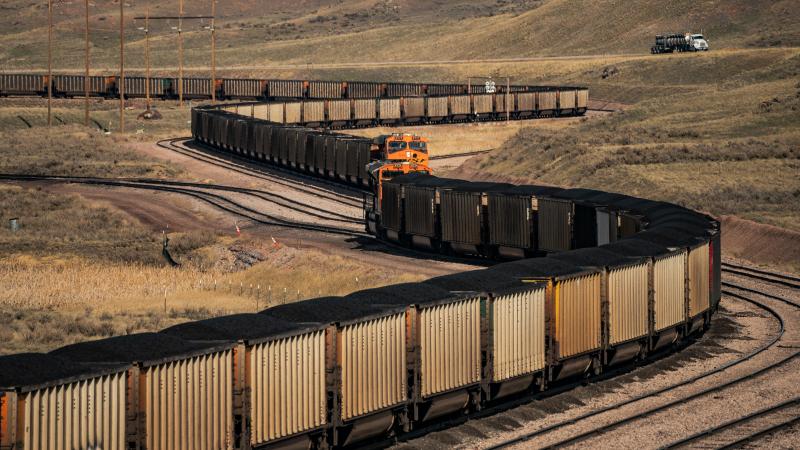In Wyoming, officials ready for battle against feds over land management
If finalized, it will designate 1.8 million acres of Wyoming as “areas of critical environmental concern,” which would severely restrict most mining, oil and gas development, and grazing.
Wyoming elected officials are gearing up for a fight with the Bureau of Land Management over millions of acres the federal agency wants to close off to most uses.
The bureau develops resource management plans for public lands across the country. These plans, according to the BLM, are meant to "keep public landscapes healthy and productive."
The development process includes public engagement and environmental impact statements under the National Environmental Policy Act.
In August, the BLM Rock Springs Field Office, which oversees approximately 3.6 million acres of land in south-central Wyoming, released a Draft Resource Management Plan revision for the area.
If finalized, it will designate 1.8 million acres of that area as “areas of critical environmental concern,” which would severely restrict most mining, oil and gas development, and grazing within that designation.
The plan has solicited stern criticism from Wyoming Gov. Mark Gordon and a U.S. House amendment, which was tacked onto the Department of Interior’s appropriations bill. It will block the BLM from implementing the plan.
Wyoming legislative committee also passed a bill to be considered in the state’s legislative session in January. It asserts the state’s authority over land within its borders and appropriates $50 million for a legal fight.
“I think this sends a message that we’re getting locked and loaded to not get pushed around anymore by the big guys back in D.C.,” said Wyoming Sen. Bob Ide during the committee hearing on the bill.
As Gov. Gordon explained in a letter to BLM Director Tracy Stone-Manning, the draft was developed over 12 years, which included multiple public meetings, input from state and local agencies, and millions of dollars in taxpayer money.
The bureau had four different alternative plans available to pursue, including one that changes little about the way the area is currently managed and others that placed limitations on various uses and development.
The bureau went with the option that has the most severe resource use restrictions, and the one that has little support in the state.
”Over a decade’s worth of contributions from local stakeholders, cooperators, counties, and state agencies are either falling on deaf ears or disingenuously being thrown by the wayside with this decision,” Gordon stated in his letter.
The plan would affect an area of the Cowboy State that hosts a range of industries, including oil and gas development, cattle ranching and mining, and it’s drawn considerable criticism from the state’s industry leaders and cattle ranchers.
In September, the BLM held an informational meeting in Rock Springs, Wyoming, which is in Sweetwater County, that drew 500 people. About 41,000 residents live in the county, which has nearly as much area as the entire state of Massachusetts. Half of those residents live in Rock Springs.
According to Cowboy State Daily, a statewide publication, people who showed up to the event expected an opportunity to voice their concerns. They were surprised to find the bureau wasn’t taking any public comment.
Jim Magagna, the executive vice president of the Wyoming Stockgrowers Association, left the meeting early.
”I can stay at home and look at maps,” Magagna told Cowboy State Daily.
According to an editorial signed by nine state legislators and published in Cowboy State Daily, over 2 million acres would be closed to oil and gas leasing, and almost the entire area would be closed to coal exploration.
The federal government owns over half the total land in the state and most oil, gas and coal development in Wyoming goes through federal approval processes.
According to the U.S. Energy Information Administration, Wyoming is the eighth largest producer of crude oil, and the 10th largest producer of natural gas. It’s the nation’s top producer of coal, accounting for 40% of the coal mined in the U.S.
This area impacted by the BLM’s plan is also home to the state’s trona mines, and nearly 50,000 acres would be closed to trona leasing and development, according to the legislators’ editorial.
Trona is a source of soda ash, which is used in manufacturing glass, chemicals, paper, detergents and textiles. Wyoming trona mines supply about 90% of the nation’s soda ash.
Rep. Harriet Hageman, R-Wyo., introduced an amendment to the Interior Department’s appropriations bill — the BLM is under the Department of Interior — that would block finalization and implementation of the plan. The amendment passed.
”This is one of the largest land grabs we've ever seen. The Rock Springs RMP threatens Wyoming’s recreation, grazing and energy industries,” Hageman said in a statement.
The Wyoming legislature has also joined in the fight against the plan.
The state Joint Agricultural Committee passed a bill that asserts the state’s jurisdiction over lands within its boundaries, citing clauses in the U.S. Constitution to support the bill's position. The bill, should it pass the Wyoming legislature next year and be signed by the governor, will also appropriate $50 million to pay for litigation, including outside counsel, against the BLM should the agency try to finalize and implement the restrictive resource plan.
“The state legislature … has a duty to protect the state and its citizens from actions that violate the constitution or harm its citizens. I take that responsibility seriously,” Wyoming Sen. Cheri Steinmetz told Just The News.
Sens. John Barrasso, R-Wyo., and Cynthia Lummis, R-Wyo., have also condemned the plan.
In a statement, Barrasso called it an “attack on our Wyoming way of life,” and Lummis criticized how the BLM ignored input from local stakeholders in choosing its resource plan.
The comment period was extended from its original November date and now closes on Jan. 17. Whether or not the BLM will respond to the outcry is yet to be seen. Rather than wait and find out, Hageman is hoping the amendment will preemptively stop the implementation of the plan.
After the BLM selected the plan that was opposed by stakeholders in the state, Wyoming legislators are also taking steps in case they’ll have to get their case heard in court.
“It seems like we don't have much of a voice at the table,” Steinmetz said during the hearing on the bill.
The Facts Inside Our Reporter's Notebook
Links
- according to the BLM
- Draft Resource Management Plan
- asserts the stateâs authority
- during the committee hearing
- Mark Gordon explained in a letter
- According to Cowboy State Daily
- editorial signed by nine state legislators
- federal government owns
- Energy Information Administration
- Wyoming trona mines supply
- introduced an amendment
- passed a bill
- have also condemned the plan
- comment period was extended
















